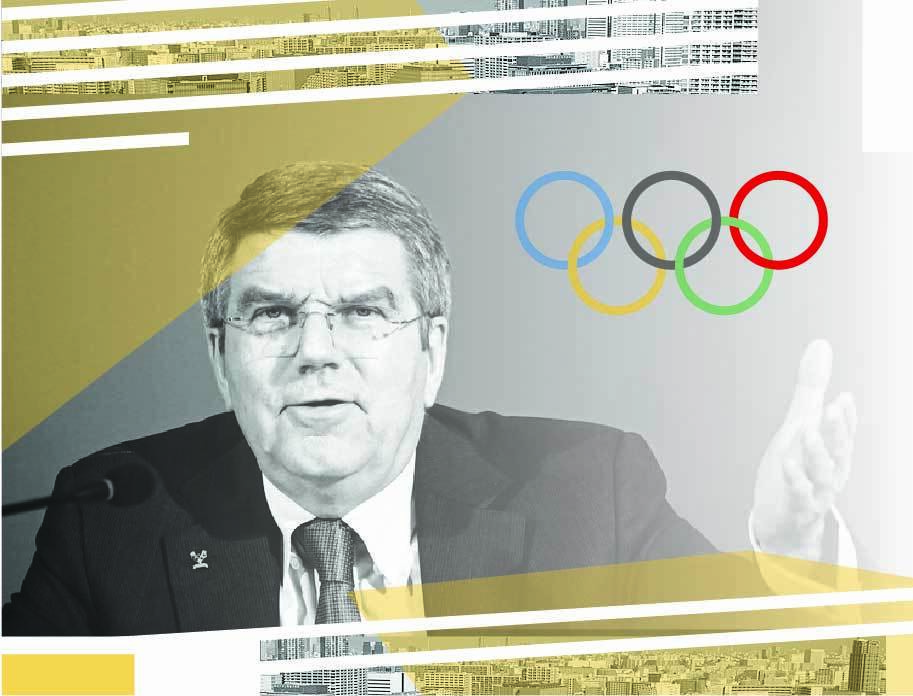
Dr Ryan Broussard
Assistant Professor in the Department of Mass Communication at Sam Houston State University. His primary research interest is the intersection of sports, media, and social and political issues.

Section 2: Media Coverage & Representation
- Twitter conversations on Indian female athletes in Tokyo
- ”Unity in Diversity” – The varying media representations of female Olympic athletes
- The Olympic Channel: insights on its distinctive role in Tokyo 2020
- How do we truly interpret the Tokyo Olympic ratings?
- Between sexualization and de-sexualization: the representation of female athletes in Tokyo 2020
- Reshaping the Olympics media coverage through innovation
- An Olympic utopia: separating politics and sport. Primary notes after analyzing the opening ceremony media coverage of mainstream Spanish sport newspapers
- What place is this? Tokyo’s made-for-television Olympics
- The paradox of the parade of nations: A South Korean network’s coverage of the opening ceremony at the 2020 Tokyo Olympics
- Tokyo 2021: the TV Olympics
- Why we need to see the “ugly” in women’s sports
- “The gender-equal games” vs “The IOC is failing black women”: narratives of progress and failure of the 2020 Tokyo Olympics
- Ghana: Poor local organizing, and absence of football team dampens interest
- Megan Rapinoe: The scary Bear for many Americans?
- ‘A Games like no other’: The demise of FTA live Olympic sport?
- Temporality of emotionalizing athletes
- Fandom and digital media during the Tokyo 2020 Olympic Games: A Brazilian perspective using @TimeBrasil Twitter data
- Media frames and the ‘humanity’ of athletes
- Reporting at a distance. Stricter working conditions and demands on sports journalists during the Olympics
- New Olympic sports: the mediatization of action sports through the Olympic Games 2020 Tokyo
- Simone Biles, journalistic authority, and the ideology of sports news
- Representations of gender in the live broadcast of the Tokyo Olympics
- Americans on ideological left more engaged in Summer Olympics
- Nigeria: Olympic Games a mystery for rural dwellers in Lagos
- National hierarchy in Israeli Olympic discourses
- Equestrian sports in media through hundred Olympic years. A roundtrip from focus to shade and back again?
- Reshaping the superhuman to the super ordinary: The Tokyo Paralympics in Australian broadcasting media
- Is the Paralympic Games a second-class event?
- The fleeting nature of an Olympic meme: Virality and IOC TV rights
- Tokyo 2020: A look through the screen of Brazilian television
- Is the Paralympic Games a second-class event?
- How digital content creators are shaping meanings about world class para-athletes
- How digital content creators are shaping meanings about world class para-athletes
- The male and female sports journalists divide on the Twittersphere during Tokyo 2020
- Super heroes among us: A brief discussion of using the superhero genre to promote Paralympic Games and athletes
- “Everything seemed very complicated”: Journalist experiences of covering the Tokyo 2020 Paralympic Games
- Representing high performance: Brazilian sports journalists and mass communication professionals discuss their philosophies on producing progressive Paralympic coverage
- Representations of gender in media coverage of the Tokyo 2020 Paralympic Games
Over the past two decades, sports reporters and media outlets have shifted from the viewpoint of athletes as entertainment and mythologizing their sports prowess—the ‘sportainment’ model of sports coverage—to presenting athletes as humans with inherent human qualities and issues. That trend of humanization was front and center in coverage of some of the biggest stories coming out of the 2020 Summer Olympic Games in Tokyo.
The best example is the coverage of Simone Biles, who withdrew from the women’s gymnastics team competition after her first rotation on the vault. Biles explained she had a case of the ‘twisties’ and needed time to focus on her mental wellbeing. American sprinter Noah Lyles and Japan’s Naomi Osaka were also open and honest about their own internal struggles.
Media coverage of the stories of these athletes was been mostly positive and focused on them as people, with the exception of some conservative commentators who attacked Biles as selfish and saying she quit on her team. But many lauded Biles for her courage to put themselves first over the competitions that rely on their star power for ticket sales and ratings. Biles, Osaka and Lyles were also lauded for bringing to light a topic in mental health that has historically been an issue that people avoided, especially in the sports sections of daily newspapers. Simultaneously, sports reporters should be lauded for their humanizing coverage of these athletes, as opposed to what happened in the past when reporters may have denigrated the athletes for putting themselves first. The coverage mostly focused on Biles, Lyles and Osaka as people first and athletes second, which is the way it should be.
This coverage is essential toward changing the societal dichotomy between athletes on the field of play and athletes off the field. Some sports fans still view sports as an escape from the daily doldrums and view athletes as entities that exist for their entertainment—people who are to be seen and not heard. Athletes who give their opinions on issues of social or political importance, like other people in other fields do all the time, are shouted down by corners of society that do not care what that athlete has to say. By humanizing athletes, especially in this era of increased emphasis placed on social issues, sports journalists can possibly accomplish two goals: break down the view of athletes as simply entertainers and continue moving sports journalism away from its history of mostly substandard coverage on social issues related to sports.
Sports journalism’s history as the ‘toy department’ of the newsroom—a place of fun and frivolity—is well documented, but that label may be anachronistic in today’s sports journalism field. As my research shows, sports journalists today want to be seen as more than just a sports reporter. They want show their peers and the public that they can handle any stories that occur on their beat besides the customary game stories, practice reports and transaction coverage.
Some of today’s best sports reporters want to write about a former multimillionaire athlete who lost everything and lives in a studio apartment in the middle of nowhere. They embrace the challenge of discussing the mental trauma some athletes went through as children and teenagers, and how that trauma impacts who they are today. Some media outlets are cutting through the noise of routine sports coverage by focusing on humanity stories, underrepresented people in sports and the impact of sports on society, as one sports editor told me in an interview.
And as these types of stories become more accepted as the norm, more space opens in the sports journalism field for other sports reporters to cover these issues. In terms of Pierre Bourdieu’s field theory, which in overly simplistic terms is a methodological framework from sociology that uses a critical lens to explain change and stasis in the social world, a “space of possibles” opens and grows as more sports reporters move toward coverage of athletes that is more humanistic than it has historically been.
In the heat of the moment after Biles withdrew from the competition, coverage focused on what this meant for the medal hopes of a US team minus the most dominant athlete in the history of the sport. But after those heat-of-the-moment reactions and after Biles explained her situation, many sports reporters focused on Biles the human, which is the way it should be.

